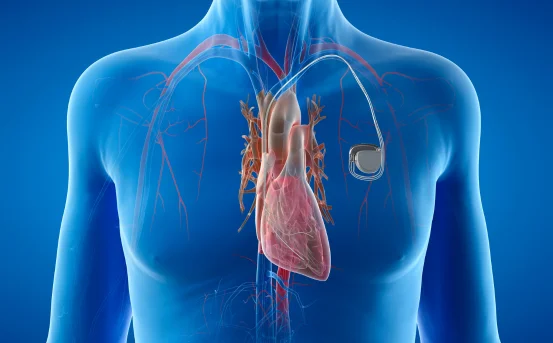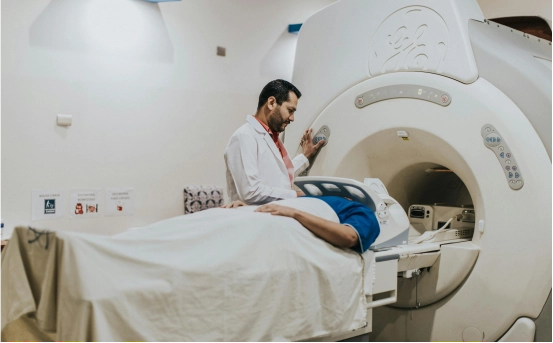Introduction
Pediatric emergencies refer to acute medical conditions in infants, children, or adolescents that require immediate intervention. Unlike adults, children may not be able to communicate their symptoms effectively, and their condition can deteriorate rapidly. Pediatric emergency can arise from infections, trauma, congenital anomalies, chronic diseases, and even allergic reactions. Timely diagnosis and management are crucial, as delays can lead to irreversible damage or fatal outcomes. Understanding the types of pediatric emergency can help caregivers and medical professionals act swiftly and appropriately.
Types of Pediatric Emergency
- Respiratory Emergencies :- Respiratory issues are among the most frequent pediatric emergencies. Conditions like bronchiolitis, asthma exacerbations, croup, and pneumonia can severely affect a child’s ability to breathe. In infants and toddlers, even a minor blockage in the airway or nasal congestion can result in significant breathing difficulty. Sudden onset of stridor, wheezing, or gasping for breath should always be treated as an emergency. In some cases, foreign body aspiration, such as swallowing a small toy or food item, can obstruct the airway and requires immediate removal.
- Febrile Seizures :- Febrile seizures occur in children aged between 6 months and 5 years, usually triggered by a sudden spike in body temperature. While most febrile seizures are benign and self-limiting, they can be terrifying for parents to witness. The child may become unresponsive, shake uncontrollably, or lose consciousness. Although simple febrile seizures do not typically cause long-term damage, complex seizures or those lasting longer than five minutes warrant emergency care and further investigation.
- Severe Dehydration :- Dehydration can escalate quickly in children due to diarrhea, vomiting, or high fever. Unlike adults, children have a higher metabolic rate and lower fluid reserves. Signs like sunken eyes, dry mouth, lethargy, rapid heartbeat, and decreased urine output are warning signs. In infants, a sunken fontanelle (soft spot on the head) may be noticeable. Severe dehydration can lead to shock, organ failure, or even death if not managed promptly with intravenous fluids and electrolyte correction.
- Anaphylaxis :- Anaphylaxis is a life-threatening allergic reaction that can occur within minutes of exposure to an allergen such as food (like peanuts or shellfish), insect stings, or certain medications. Symptoms may include hives, swelling of the face and lips, difficulty breathing, rapid pulse, and loss of consciousness. Epinephrine injection is the first-line treatment, followed by immediate hospitalization. Parents of children with known allergies should always carry an epinephrine auto-injector and be educated on how to use it in emergencies.
- Traumatic Injuries :- Children are naturally active and curious, making them prone to accidents. Falls, burns, fractures, head injuries, and road traffic accidents are common causes of trauma related pediatric emergencies. Even a seemingly minor head injury in a child can lead to serious complications like brain swelling or bleeding due to their thinner skull bones. Bleeding wounds, loss of consciousness, fractures with visible deformity, or any injury accompanied by drowsiness or vomiting should be treated urgently.
- Poisoning and Ingestion of Harmful Substances :- Children often explore the world with their hands and mouths, making accidental poisoning a serious risk. Ingesting household chemicals, medications, or contaminated food can lead to vomiting, seizures, and even organ failure. Cleaning supplies, painkillers, and even some plants can be toxic. Activated charcoal, antidotes, and gastric lavage may be required depending on the substance ingested. It’s essential to keep all hazardous materials out of children’s reach and call emergency services if poisoning is suspected.
- Cardiac Emergencies :- Although rare, cardiac emergencies can occur in children with congenital heart defects, arrhythmias, or infections like myocarditis. Sudden collapse, chest pain, palpitations, fainting, or bluish discoloration of the lips (cyanosis) are red flags. Cardiac arrests in children often follow respiratory failure, so managing breathing effectively is crucial. Defibrillation, CPR, and emergency medications may be required in such scenarios.
- Diabetic Ketoacidosis (DKA) :- In children with undiagnosed or poorly managed type 1 diabetes, diabetic ketoacidosis can be a dangerous complication. Symptoms include vomiting, abdominal pain, deep and labored breathing, confusion, and fruity smelling breath. DKA leads to dangerously high blood sugar and acid levels in the blood, which can result in coma or death if untreated. Emergency treatment involves insulin therapy, fluid replacement, and close monitoring in a pediatric intensive care unit.
- Appendicitis :- Appendicitis is one of the most common surgical emergencies in children and adolescents. It presents with abdominal pain (usually starting around the navel and moving to the right lower side), fever, vomiting, and loss of appetite. If not diagnosed early, the appendix may rupture, leading to peritonitis, a serious infection of the abdominal cavity. Prompt surgical removal of the appendix is usually required.
- Meningitis and Encephalitis :- Infections involving the brain and its surrounding structures, such as meningitis and encephalitis, are among the most dangerous pediatric emergencies. These conditions can be caused by bacteria, viruses, or fungi. Symptoms include high fever, stiff neck, light sensitivity, vomiting, seizures, and altered consciousness. Infants may show bulging fontanelle, irritability, or poor feeding. Bacterial meningitis, in particular, requires immediate antibiotics and intensive care.
Conclusion
Pediatric emergency are time-sensitive and require immediate attention, both in recognizing the symptoms and in initiating appropriate treatment. Whether the condition arises from an underlying illness, an accident, or a sudden allergic reaction, early action can significantly improve outcomes. Parents, caregivers, and healthcare providers must be educated about the warning signs of these emergencies to ensure children receive the prompt care they need. Pediatric emergency departments and trained specialists play a vital role in stabilizing young patients and setting them on the path to recovery.























